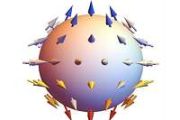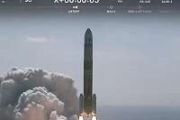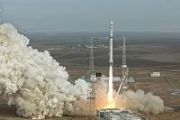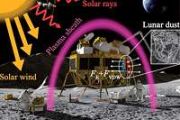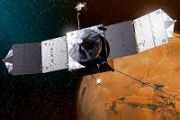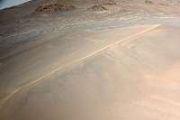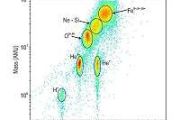
Copernical Team
Aalyria and iSEE join forces to advance space traffic management
 Aalyria, a leader in advanced networking and laser communications technologies, has announced a strategic partnership with Impact Space Expedition and Exploration Global (iSEE) to deliver an advanced space traffic management solution. By combining iSEE's cutting-edge space domain awareness tools with Aalyria's powerful network routing software, the collaboration aims to enhance satellite operati
Aalyria, a leader in advanced networking and laser communications technologies, has announced a strategic partnership with Impact Space Expedition and Exploration Global (iSEE) to deliver an advanced space traffic management solution. By combining iSEE's cutting-edge space domain awareness tools with Aalyria's powerful network routing software, the collaboration aims to enhance satellite operati China tests critical fairing for Long March 10 lunar rocket
 China Aerospace Science and Technology Corporation (CASC), the nation's state-owned space industry leader, has successfully tested a key component of its Long March 10 rocket, an essential part of China's manned lunar exploration mission.
The China Academy of Launch Vehicle Technology (CALT), a CASC subsidiary and the nation's primary rocket manufacturer, announced the completion of a sepa
China Aerospace Science and Technology Corporation (CASC), the nation's state-owned space industry leader, has successfully tested a key component of its Long March 10 rocket, an essential part of China's manned lunar exploration mission.
The China Academy of Launch Vehicle Technology (CALT), a CASC subsidiary and the nation's primary rocket manufacturer, announced the completion of a sepa PLD Space teams with Deimos to advance GNC system for MIURA 5
 PLD Space has partnered with Deimos to co-develop the Guidance, Navigation, and Control (GNC) system for its MIURA 5 orbital launcher. Scheduled to begin its launch campaign by late 2025, MIURA 5 will leverage this technology to deliver dependable, simplified launch services for small payloads, offering both dedicated and rideshare options. This partnership marks a significant addition to the gr
PLD Space has partnered with Deimos to co-develop the Guidance, Navigation, and Control (GNC) system for its MIURA 5 orbital launcher. Scheduled to begin its launch campaign by late 2025, MIURA 5 will leverage this technology to deliver dependable, simplified launch services for small payloads, offering both dedicated and rideshare options. This partnership marks a significant addition to the gr Tianzhou 7 completes cargo Mission, Tianzhou 8 docks with Tiangong
 China's Tianzhou 7 cargo spacecraft concluded its mission as it burned up upon reentry into Earth's atmosphere on Sunday night, the China Manned Space Agency reported.
According to the agency, ground control guided the robotic craft, which reentered at 9:25 pm, leading to most of the vehicle disintegrating, with only minor debris landing in designated sea zones.
Tianzhou 7 had separa
China's Tianzhou 7 cargo spacecraft concluded its mission as it burned up upon reentry into Earth's atmosphere on Sunday night, the China Manned Space Agency reported.
According to the agency, ground control guided the robotic craft, which reentered at 9:25 pm, leading to most of the vehicle disintegrating, with only minor debris landing in designated sea zones.
Tianzhou 7 had separa Beyond Gravity unveils modular satellite electronics and expands product line
 Beyond Gravity, a prominent space industry supplier based in Switzerland, has launched a modular electronics platform called FoX, designed for satellites and featuring off-the-shelf components. This new platform includes single-board computers, navigation receivers, mass memory units, and time-sensitive networking (TSN) Ethernet switches, among other components. Tom Seeman, Director of Marketing
Beyond Gravity, a prominent space industry supplier based in Switzerland, has launched a modular electronics platform called FoX, designed for satellites and featuring off-the-shelf components. This new platform includes single-board computers, navigation receivers, mass memory units, and time-sensitive networking (TSN) Ethernet switches, among other components. Tom Seeman, Director of Marketing Impulso.Space strengthens partnership with D-Orbit for multi-launch missions
 Impulso.Space USA Corp. has signed a new multi-mission contract with D-Orbit, reinforcing their ongoing collaboration and expanding the scope of comprehensive space launch services. The agreement encompasses multiple satellite launches scheduled as part of future SpaceX Transporter Rideshare missions. Impulso.Space will oversee complete mission management, providing all technical and logistical
Impulso.Space USA Corp. has signed a new multi-mission contract with D-Orbit, reinforcing their ongoing collaboration and expanding the scope of comprehensive space launch services. The agreement encompasses multiple satellite launches scheduled as part of future SpaceX Transporter Rideshare missions. Impulso.Space will oversee complete mission management, providing all technical and logistical PIAP Space enhances satellite docking for refuelling and in-orbit servicing
 As the space sector experiences rapid growth in satellite operations and diversified space missions, the demand for in-orbit servicing has risen. PIAP Space has met this need with its innovative Docking System, aimed at boosting satellite longevity, serviceability, and sustainability. This system facilitates satellite operators in extending missions, performing essential repairs, refuelling, and
As the space sector experiences rapid growth in satellite operations and diversified space missions, the demand for in-orbit servicing has risen. PIAP Space has met this need with its innovative Docking System, aimed at boosting satellite longevity, serviceability, and sustainability. This system facilitates satellite operators in extending missions, performing essential repairs, refuelling, and mmt and Quadsat join forces to offer advanced satellite emulation and RF calibration services
 Quadsat has partnered with mmt to expand the reach of its electromagnetic emulation services as part of the newly launched Quadsat Service Partner Network. This network is designed to provide global customers with fast and cost-efficient access to Quadsat's specialized services.
These services include comprehensive characterization of teleport and user terminal antennas, full satellite net
Quadsat has partnered with mmt to expand the reach of its electromagnetic emulation services as part of the newly launched Quadsat Service Partner Network. This network is designed to provide global customers with fast and cost-efficient access to Quadsat's specialized services.
These services include comprehensive characterization of teleport and user terminal antennas, full satellite net SwRI scientists repurpose chemistry modeling software to study life-supporting conditions on icy moons
 Southwest Research Institute (SwRI) is transforming software traditionally used for electrolyte modeling and corrosion prediction into an advanced tool for assessing whether ice-covered worlds could support microbial life. This effort is part of NASA's Habitable Worlds program, which leverages Earth's history to better understand the processes and conditions that foster habitability.
Typic
Southwest Research Institute (SwRI) is transforming software traditionally used for electrolyte modeling and corrosion prediction into an advanced tool for assessing whether ice-covered worlds could support microbial life. This effort is part of NASA's Habitable Worlds program, which leverages Earth's history to better understand the processes and conditions that foster habitability.
Typic New approach improves models of atmosphere on early Earth, exo-planets
 As energy from the sun reaches Earth, some solar radiation is absorbed by the atmosphere, leading to chemical reactions like the formation of ozone and the breakup of gas molecules. A new approach for modeling these reactions, developed by a team led by scientists at Penn State, may improve our understanding of the atmosphere on early Earth and help in the search for habitable conditions on plan
As energy from the sun reaches Earth, some solar radiation is absorbed by the atmosphere, leading to chemical reactions like the formation of ozone and the breakup of gas molecules. A new approach for modeling these reactions, developed by a team led by scientists at Penn State, may improve our understanding of the atmosphere on early Earth and help in the search for habitable conditions on plan 



